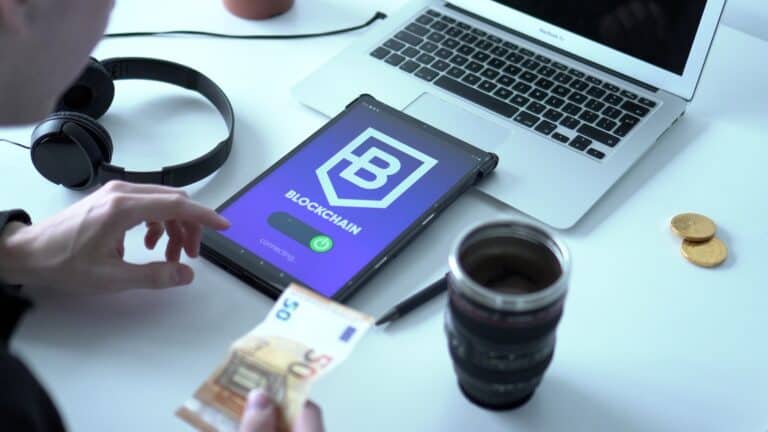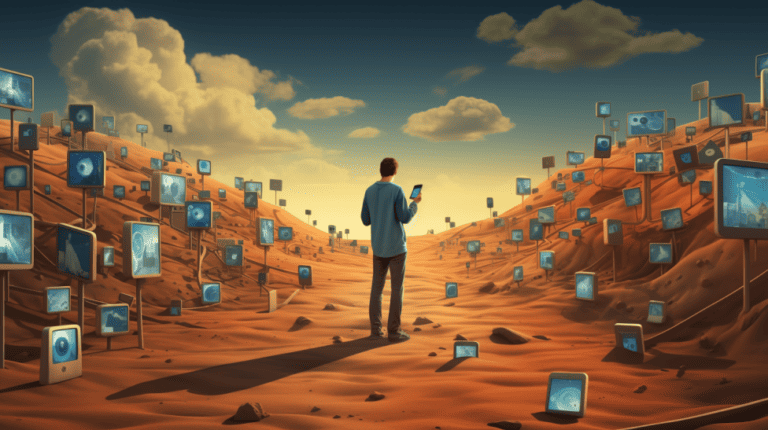AI in Marketing: Unpacking the Power and Limitations
Here’s to the vibrant, pulsating universe of AI in marketing, where innovation is a constant companion and possibilities are endless.
At Digismart, we spend our days delving into the most intricate facets of artificial intelligence, particularly in the bustling sphere of AI in marketing. It’s as exhilarating as it is mystifying. Despite the hair-raising speed at which AI is being integrated into advertising campaigns, it’s essential to keep a level head, a clear understanding of its limitations, and a healthy dash of humor (we are, after all, in the era of meme advertising).
It’s all fun and games until we find ourselves in a complex world of algorithms, data analytics, and machine learning, and can’t make heads or tails of it. Let’s not forget, we’re all beginners once. So grab your energy drink, get comfortable, and join me as we navigate the turbulent waters of AI in marketing.
Exploring the Plus Side
AI, the wonder kid on the block, is every marketer’s dream. Its benefits can be as numerous as stars in the sky (or nearly as many). AI’s fortes lie in its data analysis capabilities, its expansive customer reach, and its time and cost-efficiency.
- Targeting Precision: Picture AI as a master archer. Equipped with the right data, it can hit the bullseye in predicting consumer behavior and creating effective targeted ads. When AI meets Big Data (a term for the avalanche of data generated by digital technology), the result is an insightful concoction of targeted content and marketing strategies.
- Expanding Customer Reach: AI is a relentless worker. While you’re sipping your latte, it’s analyzing the chatter about your brand on social media, enabling you to understand customer demographics and behaviors better and refine your content accordingly. It’s like having your own private investigator tailing your brand mentions around the clock.
- Saving Time and Money: AI is the equivalent of a marketing ninja, fast and accurate. It slices through heaps of data, spots trends, and paves the way for informed advertising decisions. This means less guesswork, more efficiency, and a fatter wallet at the end of the day.
The Flip Side
But before you declare your undying love for AI, it’s important to recognize its limitations. No, AI is not a magic wand that solves all marketing woes, and yes, it does come with its fair share of challenges.
- Data Accuracy: An AI model is only as good as the data it’s trained on. If the input data is inaccurate or biased, the output will reflect those inaccuracies. The responsibility then lies on us, the human overseers, to ensure data accuracy before we let AI loose.
- The Creativity Conundrum: While AI can crunch numbers like there’s no tomorrow, it struggles with the softer, more human side of advertising: creativity. Coming up with funny, quirky, or poignant advertising content that resonates with consumers is still a predominantly human domain. After all, you wouldn’t want your brand to come off as cold and robotic, would you?
- Data Privacy: AI’s ability to collect data for personalizing ads walks a fine line with privacy concerns. It’s like having a super-efficient but slightly nosy neighbor. It’s essential to maintain a balance between leveraging data for personalization and respecting consumers’ privacy rights.
AI’s journey in the marketing world can be a game-changer in understanding customer behaviors and predicting trends, yet it’s still a novice when it comes to the creativity and intuition that humans bring to the table.
AI in Marketing Success Stories
The world of marketing is already brimming with success stories of brands leveraging AI effectively.
From the “Project Muze” campaign by Google and Zalendo to BuzzFeed’s collaboration with OpenAI to deliver personalized content, AI has been a game-changer. Project Muze was an experiment that used machine learning to create personalized fashion designs for users AI analyzed users’ preferences and style choices and generated unique clothing designs that users could then customize and purchase. The campaign was a success, generating widespread media coverage and increasing Zalendo’s brand awareness. Another example is the “AI-powered billboards” campaign by Lexus. The campaign used AI to analyze traffic patterns and weather conditions to display relevant ads on their digital billboards. The campaign was highly targeted and increased engagement and brand recall.
IBM Watson’s partnership with Best Western exemplified how AI can create personalized experiences for users, leading to increased engagement and visits to Best Western locations. Coca-Cola’s ‘Create Real Magic’ campaign showed how AI can involve consumers in the creative process, creating brand loyalty and deeper engagement.
Even financial institutions like Chase Bank are using AI to enhance their marketing copy, while agencies like Dept and Hello Monday have pushed the envelope by turning vacant shopfronts into interactive, revenue-generating AI-powered ads.
Finding the Balance
AI, with its shiny promise of revolutionizing marketing, is a seductive proposition. But as with all good things, it should be used judiciously. The decision to integrate AI into your marketing strategy should be informed by a deep understanding of its capabilities and limitations, along with the specific needs and goals of your brand.
While AI can take over a lot of the grunt work, it’s up to us, the brave, coffee-fueled marketers, to ensure that our advertising campaigns retain a human touch. After all, marketing, at its core, is about connecting people and telling stories that resonate. And as far as I know, AI hasn’t started penning heartfelt tales yet. Well, at least not without a little help from its human friends!
With humor, humility, and the right AI tools, we can navigate the exciting world of AI in marketing. Here’s to boldly going where no marketer has gone before!







